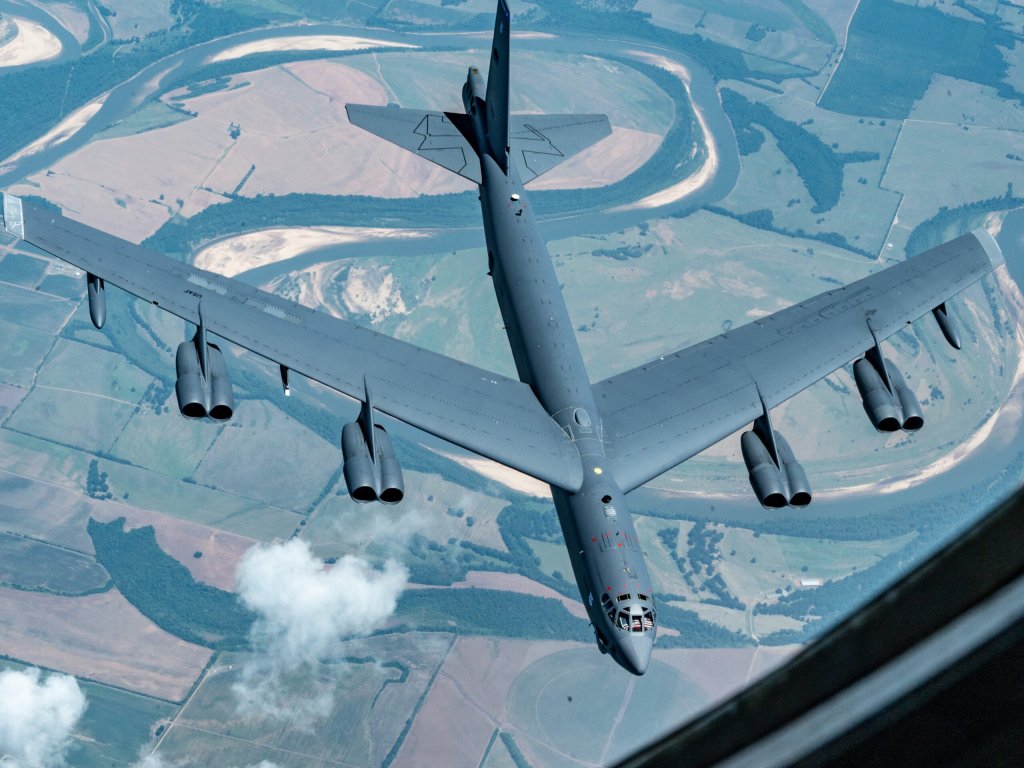

The B-52 Stratofortress is one of the oldest airframes in the U.S. military arsenal, taking its first flight in 1952. But the B-52s that are flying today are very different aircraft than the ones first flown more than 70 years ago. A lot has changed in the U.S. military and among its enemies. New weapons were developed and some critical lessons were learned.
One of those lessons came in the days of the American victory in the 1991 Persian Gulf War. At first, the Air Force announced the tail gunner’s position aboard the aircraft would be eliminated and the tail gun deactivated as a cost-saving measure, but it was actually an incident during Operation Desert Storm that caused the decision – saving money was just a nice side effect.
Desert Storm was the offensive period of the Gulf War. After building up its forces for months, demanding the withdrawal of Iraqi troops from Kuwait. The United States and its Coalition partners finally took the war to Saddam Hussein on January 16, 1991. At this time, B-52 Bombers ran bombing missions on fixed targets, Scud missiles sites, and the Iraqi Army, flying more than 1,740 sorties during the war, dropping a third of the total ordnance dropped during the war.

Their defenses included an M61A1 Vulcan cannon with an AN/ASG Fire Control System mounted in its tail. The fire control system featured a tracking radar that could lock onto a target and direct a stream of fire from the vulcan gun. A bizarre friendly fire incident with this fire control system as the root cause would eventually lead to the standing down of the tail gun on every B-52 bomber and elimination of the tail gunner’s position.
While flying missions during Desert Storm, a B-52 tail gunner reported it was being tracked by an Iraqi jet fighter. It was being tracked, but it wasn’t the Iraqis that were hot on its tail, it was an American F-4G Wild Weasel on its tail. The wild weasel’s crew fired an AGM-88 HARM (High-speed Anti-Radiation Missile) on the B-52, believing its AN/ASG fire control system was actually an enemy air defense system.

It turns out the bomber’s fire control system had locked onto the weasel at the same time as the weasel managed to fire off its AGM-88 HARM missile. The missile completely blew off the aft six to eight feet of the B-52 bomber’s fuselage, while the F-4G managed to make its escape from the bomber’s defenses. The B-52 was forced to land at an airfield near the Saudi Arabian city of Jeddah, where ground crews were able to inspect the damage.
The only conclusion they could definitely make was that it was highly unlikely the damage came from any kind of ground-based fire. The B-52 was sent to Diego Garcia and then Anderson Air Base in Guam, which was the only base that could handle the heavy duty workload of sawing off a B-52 tail section before welding another one on. The B-52 was out of action for the rest of the Persian Gulf War, but received a new nickname, “In HARM’s Way,” and some spiffy nose art out of it.

As for the tail gunners, their days were numbered. Automation was the new way of war, and mitigating friendly fire threats is just good business for the U.S. Air Force. By Sept. 16, 1991, the Strategic Air Command (SAC) commander, Gen. George L. Butler, was announcing the elimination of the gunner position.
“My decision to eliminate the guns from the ‘BUFF’ was not an easy one,” Butler said in an open letter to the now-unemployed gunners. “It stemmed from the collapse of the Soviet threat and the leading edge of very sharp budget cuts… Our Air Force is going to go through a lengthy period of turmoil as we adapt to a dramatically changing world.”
